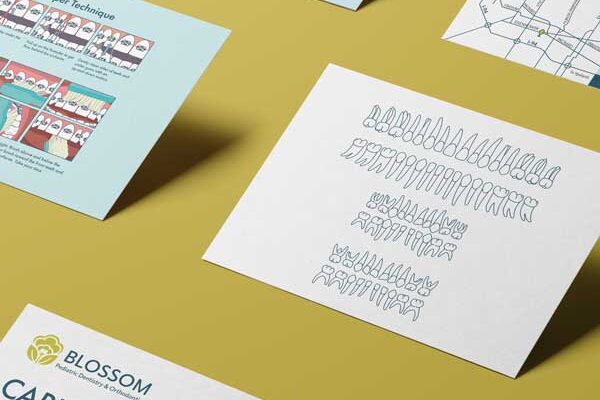Best Practices for Mobile Website Optimization in 2025
As mobile usage continues to dominate web traffic, optimizing websites for mobile devices remains crucial. By 2025, mobile-first design and user experience (UX) will be more important than ever, driven by evolving user behaviors and search engine updates. Here’s a guide to the best practices for mobile website optimization in 2025.

1. Prioritize Mobile-First Design
Mobile-first design means designing for mobile devices before scaling up to desktop. With more than 60% of global web traffic coming from mobile devices, starting with mobile ensures that your website is accessible, user-friendly, and functional on small screens. Key considerations include:
- Responsive design: Make sure your website adapts seamlessly to different screen sizes.
- Touch-friendly navigation: Use large buttons, clear CTAs, and intuitive menus that are easy to interact with using fingers rather than a mouse.
- Minimized clutter: Use clear, straightforward layouts that eliminate unnecessary content and allow users to focus on key information.
2. Speed Optimization for Mobile Devices
Mobile users expect fast load times, and Google’s Core Web Vitals prioritize site speed as a ranking factor. Pages that load slowly not only frustrate users but also impact your rankings in mobile search results. Here are some speed optimization tips:
- Image optimization: Use compressed images and next-gen formats like WebP to reduce load times without sacrificing quality.
- Minimize HTTP requests: Reduce the number of elements on your page to decrease loading times.
- Enable lazy loading: Load images only when they appear in the viewport, improving the speed of initial page load.
3. Use Accelerated Mobile Pages (AMP)
AMP is a framework designed to create fast-loading, stripped-down versions of web pages for mobile devices. While not essential for all websites, using AMP can be beneficial for content-heavy sites, like news and blogs, that need to deliver information quickly. AMP pages can load up to 85% faster than traditional mobile pages, making it an effective strategy for keeping users engaged.
4. Optimize for Mobile SEO
With Google’s mobile-first indexing, optimizing your website for mobile SEO is non-negotiable. This means ensuring that both your content and technical SEO elements are optimized for mobile users:
- Structured data: Implement schema markup to help search engines understand your content better and display rich results in search.
- Mobile-friendly meta tags: Optimize title tags and meta descriptions for mobile search by keeping them concise and front-loading keywords.
- Voice search optimization: Optimize for conversational keywords and questions, as voice searches continue to grow on mobile devices.
5. Ensure Easy Navigation and Usability
Mobile users often have less patience for complex navigation. Simplify your website’s structure to provide an intuitive experience:
- Sticky navigation bars: Keep key navigation links accessible as users scroll down the page.
- One-click access: Ensure that users can complete actions, like making a purchase or filling out a form, with minimal clicks.
- Breadcrumb navigation: Use breadcrumb trails to help users understand their location within the site and easily navigate back to previous pages.
6. Implement Mobile-Friendly Forms
Forms are a key part of most websites, but they can be a challenge for mobile users if not optimized properly. Here’s how to make forms more user-friendly:
- Use autofill and autocorrect features: Enable form fields to auto-complete where possible, reducing user effort.
- Limit the number of fields: Ask for only essential information to reduce form abandonment.
- Use large, easy-to-tap fields: Make form fields and buttons big enough for users to tap comfortably.
7. Leverage Progressive Web Apps (PWAs)
PWAs combine the best of websites and mobile apps, providing a seamless user experience with app-like functionality, even on slow connections. They offer benefits like offline access, push notifications, and faster load times, making them a popular choice for mobile optimization in 2025. PWAs can also significantly improve user engagement and are a strong option for businesses that want to enhance the mobile experience without investing in a native app.
8. Focus on Mobile Accessibility
Accessibility isn’t just a desktop consideration; mobile websites need to be accessible to all users, including those with disabilities. Here’s how to improve mobile accessibility:
- Text size and contrast: Use larger font sizes and strong contrast to improve readability on smaller screens.
- Screen reader compatibility: Ensure your mobile site is compatible with screen readers, which are commonly used by visually impaired users.
- Keyboard navigation: Enable mobile keyboard navigation for users who rely on assistive devices.
9. Incorporate Mobile Analytics
Mobile analytics tools allow you to monitor how users interact with your site on mobile devices. Use tools like Google Analytics or Hotjar to track metrics like bounce rates, user flow, and page speed specifically for mobile users. By understanding user behavior, you can make data-driven decisions to enhance the mobile experience.
10. Keep Up with Mobile Design Trends
Staying updated on mobile design trends is essential to keep your site appealing and relevant. In 2025, expect trends like:
- Micro-interactions: Use subtle animations, like button presses or loading spinners, to provide feedback and improve the user experience.
- Minimalist design: Continue using clean, uncluttered designs that make the best use of limited screen space.
- Dark mode: Offer a dark mode option for users who prefer it, improving readability in low-light conditions.
Conclusion
Optimizing your website for mobile devices is no longer optional—it’s a necessity. As mobile usage continues to rise, following best practices like speed optimization, mobile-friendly navigation, mobile SEO, and accessibility can ensure your website performs well in 2025 and beyond. Implementing these strategies will not only enhance the user experience but also improve your search rankings and drive better engagement.
At Mash Creative Co., we specialize in mobile website optimization that drives results. If you’re ready to elevate your mobile presence, get in touch to learn how we can help transform your site for 2025 and beyond.



